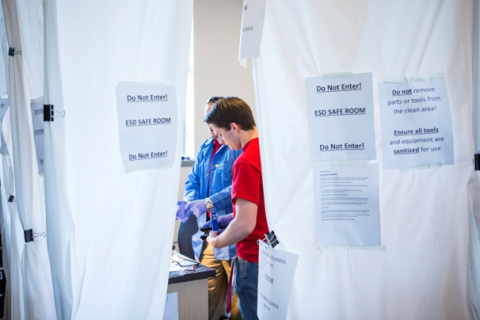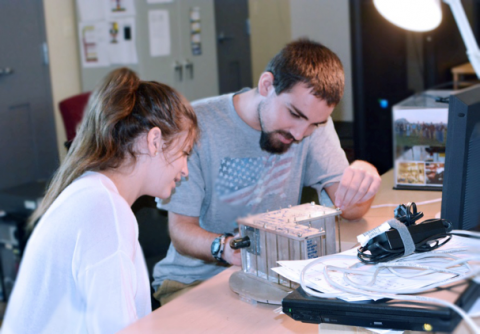www.CapTechU.edu
As summer 2018 approaches, a group of engineering and computer science students at Capitol Technology University is awaiting a NASA rocket launch that will take their project into orbit.

Both of these projects are examples of the “crawl, walk, run, fly” philosophy that drives the astronautical engineering program at Capitol – a school that emphasizes the importance of gaining practical experience in the field, in addition to learning concepts.
“We’re in the final stretch,” says Pierce Smith, lead engineer of the of the Cactus-1 student satellite project, with regard to the rocket launch. He and fellow project members are eagerly awaiting the moment when their payload – which includes two separate experiments – blasts off into space.
The student-designed experiments set to go into orbit include an aerogel-based approach to capturing space debris and a system for controlling satellites via the Iridium constellation.
As the Cactus-1 team was busy putting the final touches on their payload, members of the second team – known as Project Aether – traveled to the Maryland-Pennsylvania border and tested their handiwork during a two-and-half hour balloon flight.

Their mission, intended to observe the effects of the Aurora Borealis on the atmosphere while testing the performance of a new insulation system and compare data rates from multiple sources, has been selected for the prestigious RockSat-X program in Norway, as part of the international Grand Challenge Initiative, culminating in a launch aboard a sounding rocket.
“Crawl, Walk, Run, Fly,” the approach utilized for both student projects, is a standardized development cycle designed to ensure that missions can achieve all their needed requirements, including funding, paperwork, and successful testing.
Students begin by fleshing out their ideas in the form of a mission statement and defined goals and objectives. They create concepts and prototypes, then begin a series of high-altitude balloon tests.
Once they are confident of success, they move to NASA-accredited tests and sounding rocket flights. Ultimately, students aim for a full orbital mission, such as the one Cactus-1 is currently awaiting.
The emphasis on gaining experience through hands-on projects is a hallmark of Capitol’s astronautical engineering program, says Professor Angela Walters, the program chair.
“Capitol students get a wealth of practical experience that will help them build their careers,” she says. “They have the opportunity to work on a mission that’s going to fly in space.”
No comments:
Post a Comment